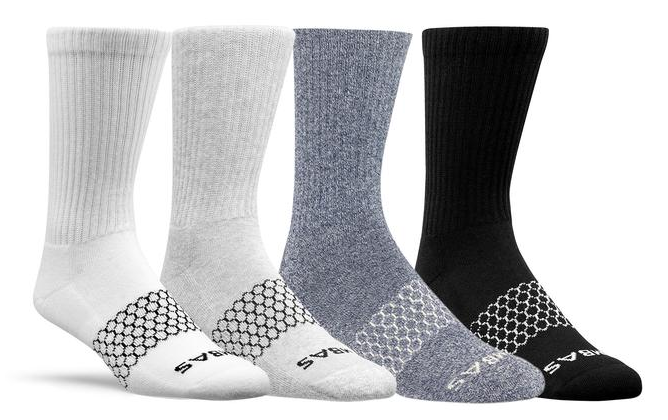The People Who Can’t Take Socks For Granted

There’s a good chance you’re probably wearing socks right now — particularly if it’s cold or wet outside — and there’s also a very good chance that, until you read these words, you hadn’t thought about your socks since you put them on your feet this morning. If you had to make a list of things you take for granted, socks wouldn’t make the list — because you take them for granted so much that you’d have forgotten about them even then.
And yet, socks are important — especially if you’re out in those cold, wet, and often unsanitary conditions. Prolonged exposure to such an environment can result in a malady known as “trench foot,” where the outer layer of skin the absorbs water, leading to swelling, blistering, and ultimately infection and tissue death. Per Wikipedia, treatment is possible albeit painful; left untreated, trench foot “usually results in gangrene, which may require amputation.” The condition gets its name from the trench warfare of World War I; while those soldiers typically had socks, they didn’t know to dry them out before putting them back on.
Today, in developed nations at least, trench foot and other immersion foot syndromes are rare — in large part because we have access to enough socks where we always have a dry (and typically clean) pair to wear. The exception, in the U.S. and Canada at least, is the homeless population. As the Huffington Post points out, “many homeless people walk all day just to eat,” and “without [socks], feet become infected and blistered to the point where people limp or can no longer walk.” And feet don’t need to hit trench foot-levels of infectedness in order to be painful and, often debilitating.
In other words: socks are really important if you’re homeless. But there’s a catch-22 here. When we think about making donations to homeless shelters, “gently used” clothing is often the standard we’re after. Items which have holes or have been through the wash a few too many times don’t make the cut. While we may outgrow some clothes or simply not want to wear some articles anymore — fashions change! — that’s typically not true for socks. Indeed, some of us wear our socks until (and at times past) the point where they’re no longer viable as socks at all. And therefore, we rarely donate socks to homeless shelters.
As a result, per Recycle Nation, a publication of the recycling industry, “socks are [among] the most requested item in shelters across the country.” This is underscored by community organizations throughout the country (here’s one example) which are always on the lookout for more socks for their local homeless population. And in some areas, business sectors, professional organizations, and student groups alike organize sock drives to help get the word out about this surprisingly critical, but relatively easily obtainable, need.
The good news is that you can help, too — just buy some socks and donate them to a homeless shelter.
Bonus fact: The Wizard of Oz — the 1939 movie — starts off with a tornado hitting Dorothy’s home in Kansas. Putting a tornado into a movie at the time wasn’t trivial but the effect was critical to the story’s success. How’d they do it? Per the Washington Post, special effects director Arnold Gillespie took, essentially, a giant sock (35 feet long), filled it with a metal rod and shook it, and “the tornado appeared to snake and wiggle its way across the stage.” He then shot dirt at the sock using compressed air to create the rest of the effect.
From the Archives: The San Francisco Bushman: San Francisco’s most famous homeless person, probably.
Related: Socks by Bombas. Also, The Wizard of Oz.
